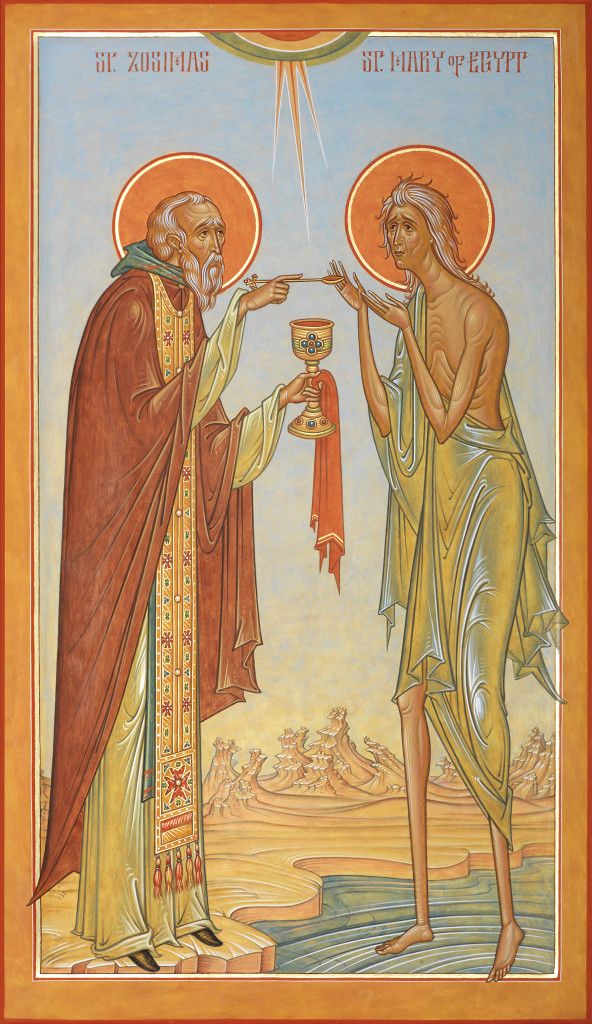An article in yesterday’s Orthodox Arts Journal reveals a new icon of Saint Mary of Egypt—my patron saint—who is commemorated in the Orthodox Christian Church on April 1 and the 5th Sunday of Great Lent (this coming Sunday). The article was written by Father Silouan Justiniano, who also wrote the icon. He goes into a lot of depth about the symbolism and style he used, so for my readers with an interest in iconography, Orthodoxy, or art, it’s well worth the read. For my purposes in this blog post I’ll only share a short excerpt, which focuses on the symbolism in the figure of Saint Mary:

St. Mary’s transfigured state, beyond the limitations of corporeality, is suggested not only by the fact that she walks on water, as the Lord Himself once did, but also by her luminescent yellow-green garment. Like precious gold, the yellow of the Sun of Righteousness glows within her, while green overshadows the glow as a symbol of the sanctifying power of the Holy Spirit, the “Giver of life.” Moreover, by standing on water St. Mary shows her overcoming of the turbidity and murkiness of the watery passions. Her mercuric state has been stabilized, lead has been turned into gold. In dispassion she becomes one with the One in Trinity and Trinity in Unity, her sins like drops of muddy water fall into the Abyss of mercy beyond being, causing a ripple without disturbance, dissolving without a trace, while her true self remains and arises undissolved. Solve et coagula…Through the furnace of repentance she has become an angel in the flesh.
I wept as I read those words on Thursday morning. The previous evening (Wednesday) I had been to a Lenten service at my parish, Saint John Orthodox in Memphis, where the Canon of Saint Andrew of Crete was chanted, and the life of Saint Mary of Egypt was read. Throughout the service—while the chanting was going on—parishioners had the opportunity to make their confessions with one of the two priests standing before the icons on the solea. I found myself there following the first half of the reading of Saint Mary’s life, moved to much-needed repentance, and receiving grace and healing from the sacrament. I felt, as the priest prayed the prayers of absolution with his stole covering my head, my true self remaining and arising undissolved. I left the service with a renewed desire to be like her, “a symbol of the purified desiring aspect of the soul”:
She roamed in the desert naked feeling no shame for she regained the garment of her primordial beauty. In her former life she had an “insatiable desire and an irrepressible passion for lying in filth,”[ix] but she is now a symbol of the purified desiring aspect of the soul, the realization of true eros, “Oh taste and see that the Lord is good…who satisfies your desire with good things” (Psalm 34:8; 103:5).
Beautiful icon, beautiful words.
Indeed (the icon) and thank you (the words.) I miss you! We’ll be in NOLA in June… I’ll let you know when and hopefully we can get together!